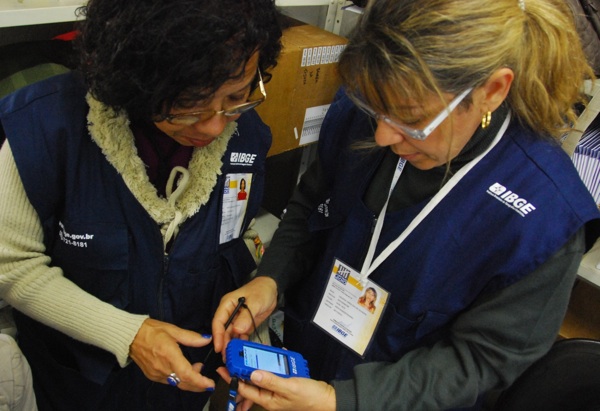Brazil Census Using 150,000 Smartphones

Brazil, a country with high levels of poverty and class inequality, conducts a census in an unusual way. The government has launched the first fully digital census. They managed to achieve this faster than developed countries such as the United States, whose digital technology trials failed and were forced to return to the old-fashioned paper census. The Brazilian census is another example of how technology is used in underdeveloped and developing countries to solve its domestic problems.
The Brazilian Institute of Geography and Statistics (BIGS), which conducted the study, opted for existing technology. They ordered 150,000 LG 750 GM smartphones, which are easily available at retail for around $ 280. Interviewers used them to collect answers to questionnaire questions and then transmit information via GPS to one of the 7000 data collection and processing centers.
Brazilians point out several advantages of using a digital census over traditional paper and pen. For example, GPS data allows you to more accurately determine the location of each family. According to GPS data, a cross-link is built on the satellite image of the country, ensuring the correctness of the binding of answers to the geographical location. The digital approach allows you to track changes in areas, streets and houses that are quite difficult to see in the usual way. This is especially important in slums, as these areas change rapidly and printed cards are rapidly becoming obsolete. The use of digital technology allows for better coverage, accuracy of transmitted information and to comply with deadlines.
According to the HIGS estimates, up to 5 percent of households turn out to be incorrectly located in the traditional census, while in the digital census this indicator is only 0.5%. Digital data collection is simpler and more reliable than traditional, and allows you to obtain data even from remote areas and ensures the inclusion of previously inaccessible communities in census statistics.
Using this technology, you can get more detailed information about the distribution in the space of public facilities, such as schools and medical centers in relation to population density, and assess the need of people in such institutions. Digital census is also much cheaper and more environmentally friendly. The latest census budget is about $ 909 million for a population of 58 million households. For comparison, in the United States, a census of a third more than in Brazil will cost $ 14 billion.
Experts believe that the digital approach in the United States failed, because the organization that was hired for these purposes tried to create a specialized device for collecting data. In Brazil, it was only necessary to develop special software for computers in data centers and applications for smartphones.
In response to a question about the safety and reliability of digital data collection, Eduardo Nunes, president of the CIGS, said that the data collected and their backups are stored on two separate drives in smartphones, and the transmitted data is immediately checked by integrity tests. Mr. Nunez also said that the interviewers did not meet any resistance among the local population, not least because, where possible, they were recruited among their communities, and the approach itself was tested since 2007.
BIGS also notes the benefit in speed of processing the collected information, because what it took years to take now takes several months. And the government has chosen a digital approach, not only with the goal of saving money, but also because it can play a key role in shaping a more public policy.
“Much attention in the 2010 census was given to information on the social and demographic spheres of the population’s life. We want to know how Brazil will be able to achieve the development goals set by the government and society by 2015, ”summed up Mr. Nunez.
